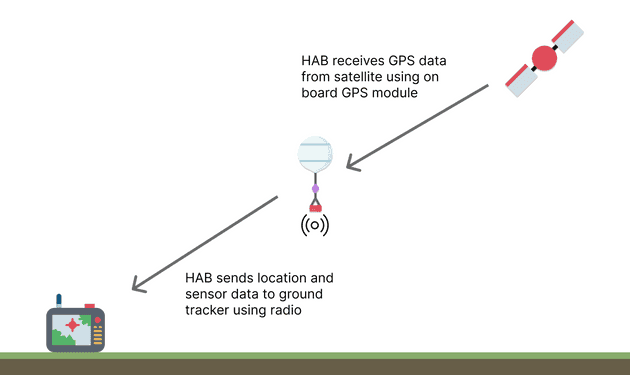The start of my journey into high altitude balloon and radio tracking
April 28, 2023
Image source: a wonderful creation by Dall-E
An episode of the Cyber podcast grabbed my attention recently, based on a topic I knew nothing about until it turned into a bit of an obsession. The topic is high altitude balloons.
The episode of Cyber is called ”The great balloon panic has been weird but good for balloon hobbyists”, and is about the F-22 fighter jet which shot down a few balloons in early 2023. One of the balloons which was shot down by the $380,000 missile is thought to have been created by a HAB hobbyist.
What is HAB
A HAB (high altitude balloon) is a term used for a large balloon which is sent up to the stratosphere for various reasons such as collecting weather data, images, or anything else that can be obtained from onboard sensors. HAB balloons are commonly known to be weather balloons, and most are sent up by professional companies that spend a lot of money on expensive hardware and software.
There is also a small number of HAB enthusiasts who are hobbyist/amateurs who are able to develop their own hardware and software, and send a HAB up into the stratosphere for as little as £50.
What does a HAB contain
HAB balloons are filled with either Helium or Hydrogen most of the time, and contain payloads. The payload can contain anything from simple electronic sensors to a pizza, however the vast majority contain a few specific parts:
- Temperature sensor
- Humidity sensor
- Camera
- GPS receiver - used to receive GPS coordinates and altitude data of the balloon. This is good to understand it’s location for understanding sensor reading, but also provides a way to retrieve the balloon once it lands back down on the ground.
- Radio transmitter - used to send the GPS and other sensor data back down to the ground.
Tracking a HAB
When sending up a HAB, you likely want a way to track it so you can retrieve the payload afterwards. It’s common for hobbyists to send a HAB up early in the morning and spend the day tracking the ascent to the target burst altitude. Once the target altitude is reached, the balloon will pop due to a difference in inside-outside air pressure, and fall down to the ground with a parachute. This ascent and descent can be done in a single day, so tracking in real-time is a viable option.
Tracking a HAB looks like one of the most fun parts of sending a HAB up in the air. You can’t track a balloon with something like WiFi or Bluetooth as those methods only reach short distances - 10’s of meters mostly. A balloon can ascend to 20km - 50km in the air, so much longer distances are required. That’s where the radio tracking comes in, as this can be achieved over many kilometers.
A typical tracking setup would look something like this:
My journey to HAB
Everything involved with HAB sounds fun to me. You get to create your own software, build physical components such as those created for Arduino/Raspberry Pi, and also get to physically send up a balloon. I found many great articles online to learn from, such as this incredible detailed post, as well as loads of Q/A’s on Arduino and Reddit forums.
I’ve not purchased anything to do this yet, but I estimate the whole single flight, including hydrogen or helium, balloon, and payload, will cost between £200 and £300.
My journey over the next couple of months will include learning about as many aspects of HAB flights as I can, and share my findings, including payload construction and (hopefully) an eventual HAB flight attempt of my own, here in a series of posts.
Senior Engineer at Haven


